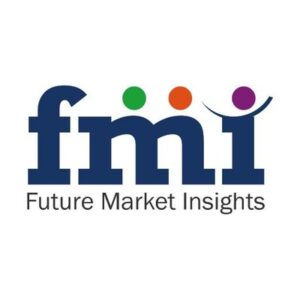Future Market Insights predicts a 5% Compound Annual Growth Rate (CAGR) for the perforated packaging market from 2022 to 2032, with the demand for such packaging expected to reach a value of US$ 24.8 Billion by the end of this fiscal year. Their study anticipates that the industry will eventually reach a substantial valuation of US$ 40.39 Billion by the year 2032.
The perforated packaging market is regionally segmented into Latin America, Europe, North America, Asia-Pacific excluding Japan (APEJ), and the Middle East & Africa (MEA). This market is expected to experience steady growth between 2016 and 2024.
North America is anticipated to witness significant growth in the perforated packaging market during this period, primarily due to its high consumption of processed meat and packaged food. The region’s affinity for convenience foods and quick-service restaurants contributes to this trend.
In contrast, the demand for perforated packaging in Eastern and Western Europe is expected to be sluggish, mainly due to government policies discouraging extensive plastic usage in packaging.
The APEJ region, which includes countries like India and China, is poised for robust growth in the perforated packaging market. This growth is driven by rapidly changing lifestyles, an increase in modern retail outlets, and a growing consumption of processed meat and packaged foods. The APEJ region is expected to yield promising results for the perforated packaging market, reflecting evolving consumer preferences and lifestyle choices.
Request Sample: https://www.futuremarketinsights.com/reports/sample/rep-gb-3209
Perforated Packaging Market – Key Players
Some key players in the perforated packaging market are
- Amcor Limited
- Now Plastics
- Helion Industries
- Amerplast
- ULTRAPERF
- Ajover S.A.
- A-ROO Company LLC
- 3M Company
- LaserSharp FlexPak Services
Perforated Packaging Market- Market Dynamics
- Environmental Concerns: Increasing environmental awareness has prompted a shift toward sustainable and eco-friendly packaging solutions. Perforated packaging, which often uses less material and reduces waste, aligns with these concerns.
- Food Industry Trends: The food industry, particularly the demand for fresh and convenient foods, plays a crucial role. Perforated packaging allows for proper airflow, prolonging the freshness of products like fruits, vegetables, and baked goods.
- Retail Landscape: The growth of modern retail outlets and convenience stores has increased the demand for perforated packaging, as it offers easy storage and display advantages.
- E-commerce Expansion: The surge in e-commerce has driven the need for perforated packaging in shipping, as it facilitates breathability and extends product shelf life.
- Health and Hygiene: The COVID-19 pandemic has elevated awareness about health and hygiene, impacting packaging choices. Perforated packaging, which can enhance cleanliness and safety, is increasingly valued.
- Government Regulations: Regulations and standards regarding food safety and packaging materials affect the adoption of perforated packaging, especially in regions with stringent guidelines.
- Consumer Convenience: Perforated packaging enhances consumer convenience by allowing easy opening and resealing of packages, making it a favored choice for many products.
- Customization and Branding: Perforated packaging can be customized with branding, labels, and designs, which enhances product presentation and consumer appeal.
Request Customization: https://www.futuremarketinsights.com/customization-available/rep-gb-3209
Perforated Packaging Market- Market Segmentation
The perforated packaging market can be segmented by the size of the perforation, material used, the product formed, manufacturing technology used and application.
Based on the Perforation size the perforated packaging market can be segmented into:
- Micro perforation
- Macro perforation
Based on the use of material the perforated packaging market can be segmented into:
- Low-density polyethylene
- Polypropylene
- Perforated tarpaulin
Based on the product formed the perforated packaging market can be segmented into:
- Woven sacks bags
- Liner bags
- Bopp film
- Anti-bacterial BOPP film
Based on the manufacturing technology used the perforated packaging market can be segmented into:
- Laser perforated films
- Punched hole films
Based on the application, the perforated packaging market can be segmented into:
- Bakery & Confectionery Products
- Produce grain
- Produce vegetable
- Produce fruits
- Dried fruits
- Other food products
About Future Market Insights (FMI)
Future Market Insights, Inc. (ESOMAR certified, recipient of the Stevie Award, and a member of the Greater New York Chamber of Commerce) offers profound insights into the driving factors that are boosting demand in the market. FMI stands as the leading global provider of market intelligence, advisory services, consulting, and events for the Packaging, Food and Beverage, Consumer, Technology, Healthcare, Industrial, and Chemicals markets. With a vast team of over 5000 analysts worldwide, FMI provides global, regional, and local expertise on diverse domains and industry trends across more than 110 countries.
Contact Us:
Future Market Insights Inc.
Christiana Corporate, 200 Continental Drive,
Suite 401, Newark, Delaware – 19713, USA
T: +1-845-579-5705
For Sales Enquiries: sales@futuremarketinsights.com
Website: https://www.futuremarketinsights.com
LinkedIn| Twitter| Blogs | YouTube

